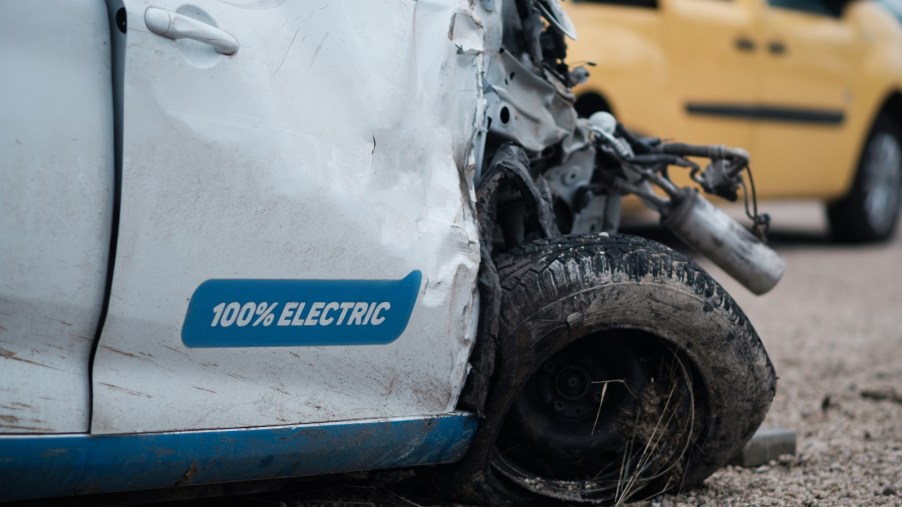
Crash tests reveal most guardrails won’t stop EVs
This year, the Midwest Roadside Safety Facility at the University of Nebraska-Lincoln released a study on the U.S. guardrail system. The U.S. Army Engineer Research and Development Center (ERDC) sponsored the research. In it, experts crash-tested a Rivian R1T pickup and a Tesla Model 3 sedan. The results left analysts uneasy about the guardrail system and the increasing number of EVs on U.S. roads.
The study says that the U.S. sees more than 100,000 “run-off-road” crashes every year. In these car accidents, vehicles interact with installed traffic structures like roadside barriers. These components help keep cars on or near the road. For example, they prevent vehicles from careening into oncoming traffic or falling off sharp drops.
Moreover, the ERDC is interested in how well the current U.S. military protection measures can handle hostile vehicles, including EVs.
Also, according to the MRSF study, run-off-road crashes involving EVs seem to occur at the same rate and speed as gas-powered vehicles.
“There is some urgency to address this issue,” said Cody Stolle, assistant director of the Midwest Roadside Safety Facility. “As the percentage of EVs on the road increases, the proportion of run-off-road crashes involving EVs will increase, as well.”
The Midwest Roadside Safety Facility designed the tested guardrail system. It looks similar to those already installed on many U.S. roads. However, the MRSF developed the new system to provide inexpensive, high-performance structures addressing instances of barrier ruptures and rollovers in older designs.
Unfortunately, a Rivian R1T traveling 60 mph “tore through the barrier with little reduction in speed.” In an earlier test, a Tesla Model 3 “lifted the guardrail and passed below it.”
The system would theoretically work well with vehicles weighing between 2,400 and 5,000 lbs. However, EVs typically weigh 20% to 50% more than internal combustion cars, mainly due to the weight of the battery platform.
Since the 2022 Rivian R1T weighs 7,148 lbs, modern barriers are simply not designed to withstand its high-speed impact.
These days, traffic barriers need to account for a wide array of vehicle heights and weights. “We need to know as much as we can now because it takes time to design new systems, evaluate them and confirm those results with full-scale crash testing,” Stolle said. “Then, state departments of transportation around the country can begin the process of upgrading roadside barriers to new versions with more robustness.”
EV drivers should be aware that on most U.S. roads today, guardrails and other installed barriers might not effectively keep them in safe zones.



